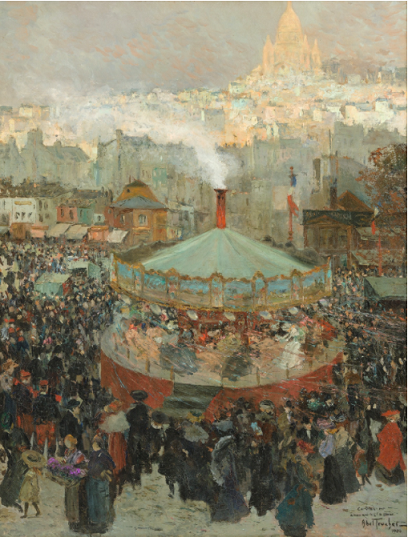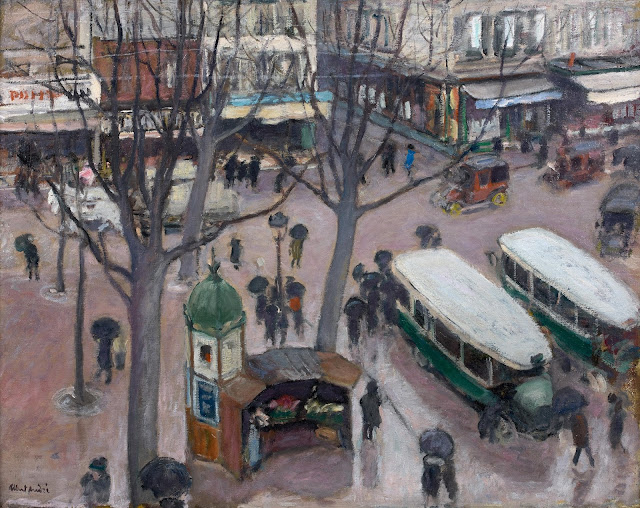Hassan Hajjaj, B. 1961, MOROCCAN
WINK, c. 2007
Metallic Lambda inset with kohl boxes mounted on board in artist's frame
94 by 66cm.; 37 by 26in.
Private collection
Hassan Hajjaj (born Larache, Morocco in 1961) is
a contemporary artist who lives and works between London, UK and Marrakech,
Morocco.
Hajjaj's
work is in the collections of the Brooklyn Museum, New York; the British
Museum, London; the Nasher Museum of Art, Duke University, Durham, NC; the
Newark Museum, New Jersey; Los Angeles County Museum of Art, Los Angeles; Los
Angeles Museum of Contemporary Art, Los Angeles; the Victoria & Albert
Museum, London; the Farjam Collection, Dubai; Institut des Cultures d’Islam,
Paris; Kamel Lazaar Foundation, Tunisia; and Virginia Museum of Fine Art,
Richmond, VA.
Hajjaj was the winner of the 2011 Sovereign Middle East and
African Art Prize and was shortlisted for Victoria & Albert Museum's
Jameel Prize in 2009. In 2013, Rose Issa Projects published a monograph of the
artist exploring his upbringing in Morocco and London. More on Hassan Hajjaj
Safwan Dahoul, B. 1961, SYRIAN
UNTITLED, c. 1992
Oil and gold leaf on wood
25 by 20cm.; 9 7/8 by 7 7/8 in
Private collection
Safwan Dahoul was born in 1961 in Hama, Syria, Dahoul was initially trained by leading modernists at the Faculty of Fine Arts, University of Damascus before travelling to Belgium, where he earned a doctorate from the Higher Institute of Plastic Arts in Mons. Upon returning to Syria, he began teaching at the Faculty of Fine Arts and was a prominent member of the Damascus art scene. In the span of a decade, Dahoul nurtured a new generation of artists as an active mentor whose evolving aesthetic often ignited new directions in painting. Given the trajectory and status of his painting style, Dahoul’s career is regarded as a crucial link between modern and contemporary Arab art. More on Safwan Dahoul
Hussein Bikar, 1912 - 2002, EGYPTIAN
THE LANDLORD, c. 1984
Oil on paper
46 by 27cm.; 18 1/8 by 10 1/2 in
Private collection
Hussein Amin Bicar (2 January 1913 in Alexandria – 16 November 2003) was one of Egypt’s most prominent artists of the 20th century, after graduating from the Cairo higher school of fine arts in 1934, he spent more than 60 years of his life teaching art at schools and universities and then through the press, he is credited for initiating a style of journalistic art that elevated illustrating for news papers to a level close to that of the fine art, he is known for his simple and clear style reflecting the influence of Pharaonic art with its harmony, serenity and mystic. Bicar’s journalistic contributions go beyond illustrations to include art criticism and narrative poetry. Being the first Egyptian artist to illustrate Arabic children’s books, Bicar has played a major role in establishing and promoting this field.
Furthermore, his portraits and oil paintings depicting graceful Egyptian peasants, Nubian scenes, Alexandria and Pharaonic themes as well as his elegant, gracious nature has earned him great recognition and honors. In the words of late journalist Mustafa Amin:"he is not a single artist, he is a master of several arts…he is a painter, photographer, poet, musician and philosopher".
Adham Wanly, 1908-1959, EGYPTIAN
CHEVEAUX HONGROIS AU CIRQUE (HUNGARIAN HORSE AT THE CIRCUS), c. 1953
Oil on panel
53 by 74cm.; 20 7/8 by 29 1/8 in.
Private collection
Adham Wanly (1908 in Alexandria, Egypt –
1959) was a painter who
learnt in the atelier of the Italian Otorino Becchi 1932, then set up his own
atelier with his brother Seif Wanly (above), and participated in many local and
international exhibition specially Venice, São Paulo (Brasil), Alexandria Biennale.
The Museum of Modern Art in Alexandria displays
many of his paintings. The artist is mostly famous for recording the life of
the theater and circus. He specialized in the ballet and opera that is featured
in the Cairo Opera House and the Theatre Mohamed Ali in Alexandria. The
paintings render the stage lights and movements of the people involved and he
is able to express the light and agility in various ways. He had a talent in
caricature in which he used in mockery of himself and the people of his time.
There is now a museum in his memory. More on Adham Wanly
Shakir Hassan Al-Said, 1925-2004, IRAQI
UNTITLED (TOWN), c. 1951
Watercolour and pencil on paper
i) 24 by 20cm.; 9 1/2 by 7 7/8 in. ii) 29 by 21.5cm.; 11 1/2 by 8 1/4 in
Private collection
Shakir Hassan Al Said (1925–2004), an Iraqi painter, sculptor and writer, is considered one of Iraq's most innovative and influential artists.
Born in Samawa, Al Said lived, worked and died in Bagdad. In 1948 he received a degree in social science from the Higher Institute of Teachers in Baghdad and in 1954 a diploma in painting from the Institute of Fine Arts in Baghdad. He continued his studies at the École nationale supérieure des Beaux-Arts in Paris until 1959. During his stay in Paris, he discovered Western modern art in galleries and Sumerian art at the Louvre. He returned to Baghdad in 1959.
He co-founded in 1951 with Jawad Saleem Jama'et Baghdad lil Fann al-Hadith (Baghdad Modern Art Group), one of the most unusual arts movements in the Middle East in the post–World War II, itwas called Istilham al-turath (Seeking inspiration from tradition), considered as "the basic point of departure, to achieve through modern styles, a cultural vision". He headed the group after the death of Saleem in 1961.
In 1971, he founded Al Bu'd al Wahad (the One-dimension Group)", which promoted the modern calligraphic school in Arab art.
His work is collected by major museums, such as Mathaf: Arab Museum of Modern Art in Doha, the Guggenheim in New York, and Sharjah Art Museum. More on Shakir Hassan Al Said
Shakir Hassan Al-Said, 1925-2004, IRAQI
UNTITLED (MAN AND HORSE, c. 1950
Watercolour and pencil on paper
i) 24 by 20cm.; 9 1/2 by 7 7/8 in. ii) 29 by 21.5cm.; 11 1/2 by 8 1/4 in.
Private collection
Shakir Hassan Al Said (1925–2004), see above
Mostafa Abdel Moity, B. 1938, EGYPTIAN
NN51, c. 1967
Paper collage, acrylic, fabric, nails and felt pen on wood panel
120 by 77.7cm.; 47¼ by 30½in
Private collection
Born in Alexandria, Egypt in 1938, Mostafa Abdel Moity got his degree from the Academy of Fine Arts in Alexandria in 1962, and immediately began teaching as a faculty member at the academy and has continued to do so ever since. He was Vice President of the World Congress of Contemporary Art in Venice in 1985, and the Head of the Egyptian Academy in Rome in 1988.
Mostafa Abdel Moity's early works had touches of the figurative and the recognizable, with his style developing and evolving into distinctly abstracted paintings and sculptures characterized by aggressive bold lines and blocks of vibrant colors. Circles and triangles are used extensively in his work, together with other geometrical patterns, evoking notions of outer space and infinity. More on Mostafa Abdel Moity
Please visit my other blogs: Art
Collector, Mythology, Marine
Art, Portrait of a Lady, The
Orientalist, Art of the Nude and The
Canals of Venice, Middle
East Artists, 365
Saints and 365 Days, also visit my Boards on Pinterest
Images are copyright of their respective owners, assignees or others.
Some Images may be subject to copyright
I don't own any of these images - credit is always given when due unless
it is unknown to me. if I post your images without your permission, please tell
me.
I do not sell art, art prints, framed posters or reproductions. Ads are
shown only to compensate the hosting expenses.
If you enjoyed this post, please share with friends and family.
Thank you for visiting my blog and also for liking its posts and pages.
Please note that the content of this post primarily consists of articles
available from Wikipedia or other free sources online.






























